As the winter season begins, we all need to warm our living and working spaces to avoid freezing. But how do you determine the right heater, boiler, or furnace size to warm your home? The best way to measure heat is by checking the BTU rating. So you need to calculate heating requirements, then match the value with the BTU rating on the device. We will dive into this heating unit to inform you how many you need to heat your space below. Read on to learn more!
What is a BTU?
A British Thermal Unit (BTU) is a unit for heat measurement. One BTU defines the heat required to elevate the temperature of a single pound of water by one degree Fahrenheit. It standardizes heating measurements, making it applicable to most heating equipment. And the correct rating is BTUs per hour, which shows how much heat the device can create in an hour. But air conditioners also have BTU ratings. So the unit can define heat loss or gain.
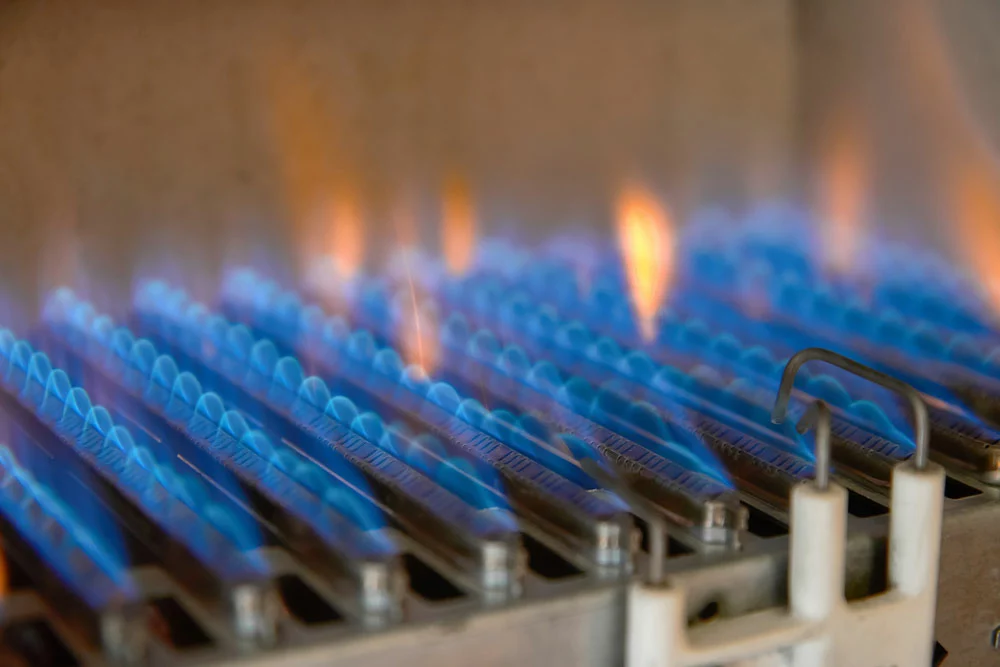
Gas burning in a heating appliance
Calculator for Heating BTUs
The typical heating calculator equation for heating and cooling systems should determine the amount of heat you want to gain or lose. And it usually depends on several variables, such as insulation and sun exposure.
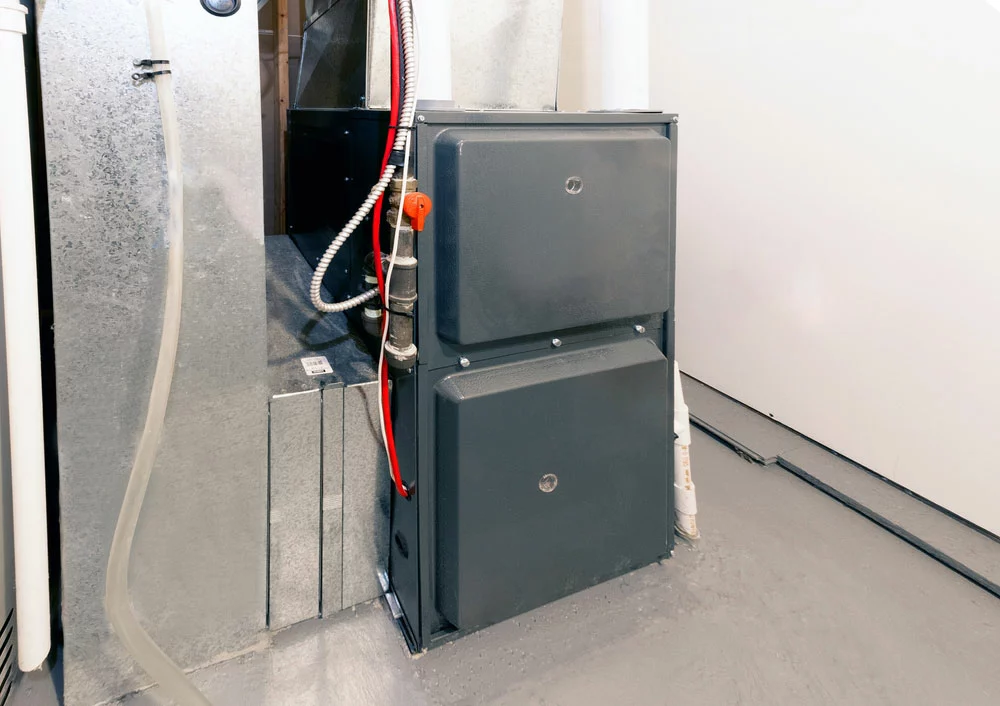
An energy-efficient furnace installed in a basement
But the most vital part of the heat capacity formula is the required temperature difference (desired rise or drop). Heating BTU calculators are available online to help you find the right-sized unit considering all variables. But you can use this simple formula to determine your heating needs.
Desired Temperature Rise/Drop X Cubic Feet of Space X 0.133 = BTUs of Heat per Hour
Additionally, there are still rules of thumb to follow. For instance, a 300-square-foot space needs roughly 7,000 BTUs to maintain a comfortable constant temperature.
Recommended Heating BTU/Square Foot Chart
| Home Size (Square Footage) | Example | Extremely Hot Climate | Standard Climate | Extremely Cold Climate |
| 500 | Studio, small 1-bed apartment | 15,000 BTU | 22,500 BTU | 30,000 BTU |
| 1,000 | 2-3 bedroom apartments, small home | 30,000 BTU | 45,000 BTU | 60,000 BTU |
| 1,500 | Average Home, 40×40 garage | 45,000 BTU | 67,500 BTU | 90,000 BTU |
| 2,000 | Guesthouse, townhouse, the average home | 60,000 BTU | 90,000 BTU | 120,000 BTU |
| 2.500 | Large townhouse, average to large home | 75,000 BTU | 112,500 BTU | 150,000 BTU |
| 3,000 | Large home | 90,000 BTU | 135,000 BTU | 180,000 BTU |
| 3,500 | Luxury home | 105,000 BTU | 157,500 BTU | 210,000 BTU |
| 4,000 | Luxury 4-bedroom home | 120,000 BTU | 180,000 BTU | 240,000 BTU |
| 4,500 | Spacious and luxurious homes | 135,000 BTU | 202,500 BTU | 270,000 BTU |
| 5,000 | Spacious and luxurious homes | 150,000 BTU | 225,000 BTU | 300,000 BTU |
Factors Affecting Heating Requirements
Four primary factors affect heat requirements, and they include the following.
Calculate Heating Requirements: Climate and Weather
Climate determines the ambient temperature inside your home, which affects how much heat you need to live comfortably. For instance, warmer climates in zone 1 or 2 areas in the southern part of the US need about 30-40 BTUs/square foot. The zone 3 and 4 locations in the middle section of the country need roughly 40-45 BTUs/square foot, while states in the higher colder parts (zone 5) need about 50 BTUs/square foot.
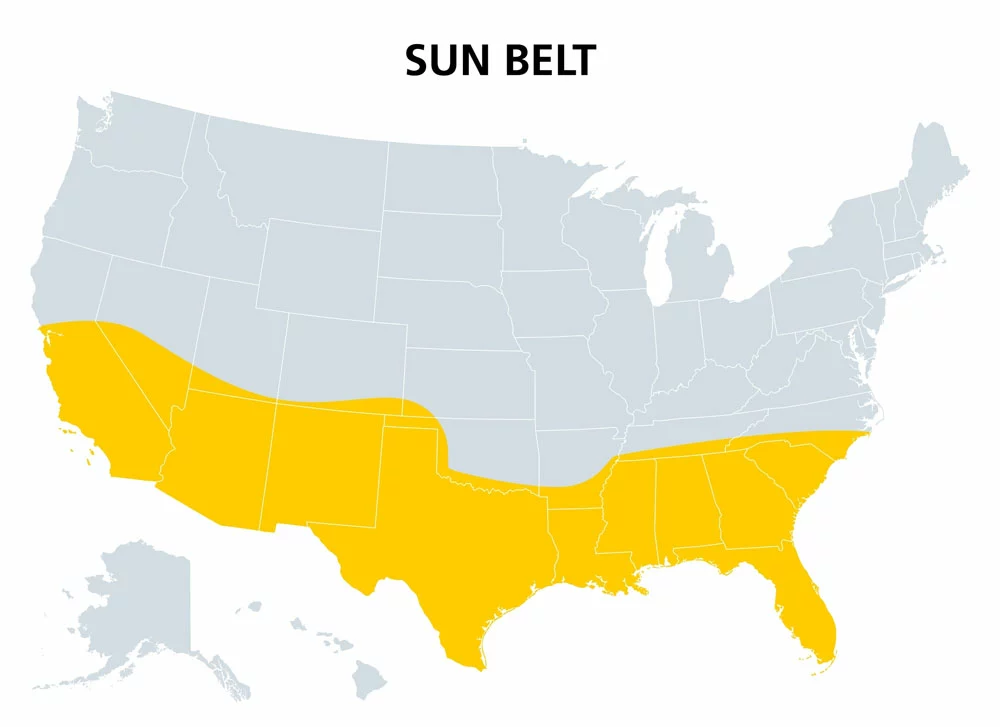
The US sunbelt shows the warmest zones in the country
Therefore, the colder the outdoor temperature, the higher the BTU rating you’ll need. And when you know your climate zone, you can approximate the BTU heating capacity required for your work/home space. For instance, in the middle part (zone 3 or 4), a 100,000-112.000 BTU furnace size will be sufficient for 2,500 square feet of space.
| Climate Zone | BTUs/Square Foot |
| Zone 1 | 30 |
| Zone 2 | 35 |
| Zone 3 | 40 |
| Zone 4 | 45 |
| Zone 5 | 50 |
| Zone 6 | 55 |
| Zone 7 | 60 |
Calculate Heating Requirements: Area Size (Square and Cubic Feet)
Generally, the larger the space, the larger the furnace size you need to maintain a comfortable temperature. While it is possible to get oversize electric heaters or air conditioners, this decision might create a new set of problems, such as:
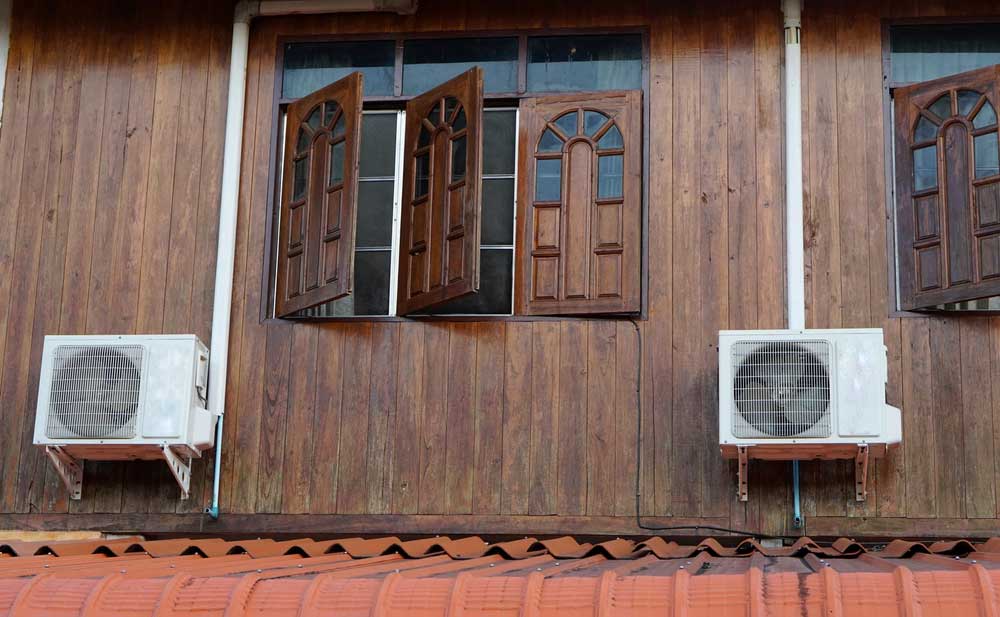
Two air conditioner compressor units
- Excessive noise
- Compressor strain due to frequent on/off cycles
- Reduced efficiency
So it is vital to get the right size and type of heating equipment. And using cubic footage is more accurate than square footage because it factors in the ceiling height.
Calculate Heating Requirements: Sun Exposure
Trees create a cooling effect on everything under their shade. So if your home has several trees around it that throw their shade to your roof and walls, the house will have cold temperatures.

A house under tree shade
Also, other tall buildings can cast shadows on your home, making it extremely cool. In such a case, you will need a heater with a high BTU rating to elevate the temperature.
Calculate Heating Requirements: Building Quality and Materials
Materials like wood and insulation trap more heat inside the building than concrete, making it easier to maintain warm temperatures. Insulation is critical and affects the heat energy requirements significantly. Take a look at the following table.
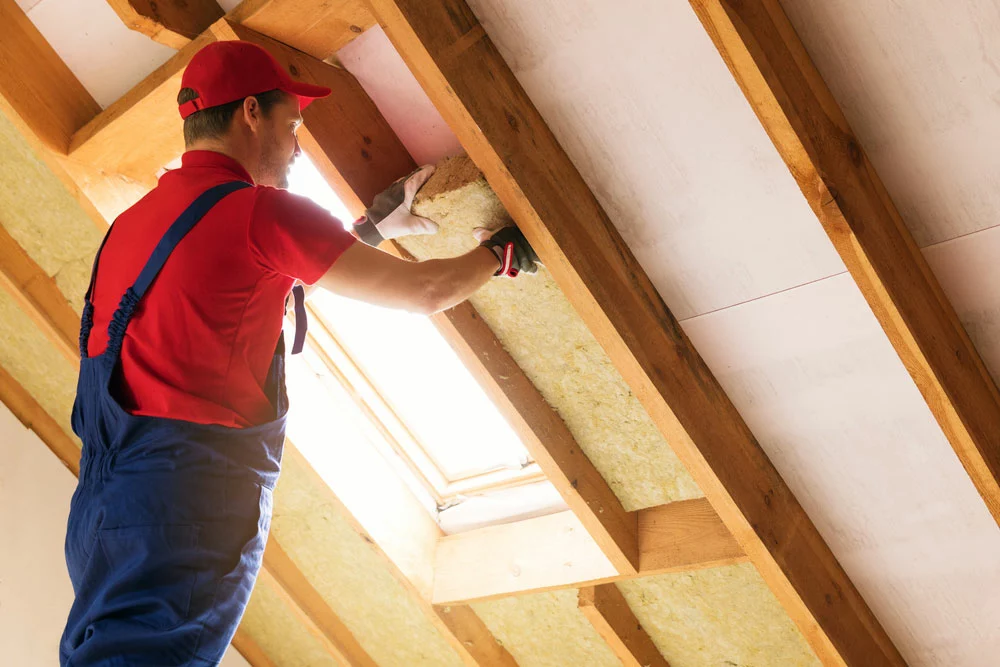
Calculate Heating Requirements: A worker installing rock wool insulation in a mansard wall in the attic
| Square Footage | Poor Insulation | Moderate Insulation | Recommended Insulation |
| Up to 200 | 9,000 BTU | 6,000 BTU | 4,000 BTU |
| Up to 400 | 18,000 BTU | 12,000 BTU | 8,000 BTU |
| Up to 600 | 27,000 BTU | 18,000 BTU | 12,000 BTU |
| Up to 800 | 36,000 BTU | 24,000 BTU | 16,000 BTU |
| Up to 1000 | 45,000 BTU | 30,000 BTU | 20,000 BTU |
The building quality plays a significant role, as well. Multiple windows or large ones, for instance, let in more natural light. But with brightness comes cold air. So you need to strike a balance between the two, especially if you live in zone 5-7 areas.
It is vital to note that south-facing windows let in more sunlight, which creates more heat inside the home. While this natural heating is beneficial in winter, you will need a powerful AC to cool your home during summer.
There are multiple dynamics to consider when looking at building quality and materials. So you should measure the house while considering the room layout, window location, insulation, and potential shade.
How Many BTUs Does a Furnace or Boiler Produce?
It depends because furnaces and boilers are available in a wide size range. The tiniest gas furnaces produce about 30,000 BTUs/hour, while the largest ones can hit 140,000 BTUs/hour.
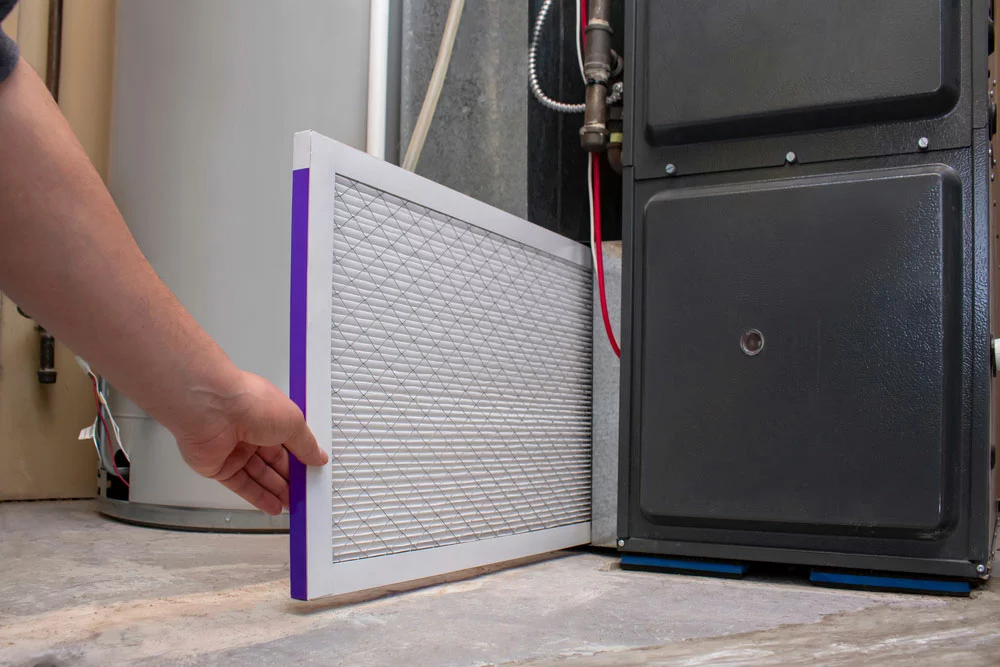
Calculate Heating Requirements: A person changing an air filter in a furnace
These furnaces usually run on gas, propane, or oil, and the most typical sizes range from roughly 70,000 to 120,000 BTUs/hour. But oil furnaces have a different range that goes from 60,000 to 160,000 BTUs/hour.
Some people use electric heaters while others burn fuel to keep warm. Propane and natural gas are the most typical fuels used to heat homes. While both are clean and efficient, the former has about twice the energy contained in natural gas. Therefore, using natural gas means you’ll burn more fuel to get the required BTU of heating output.
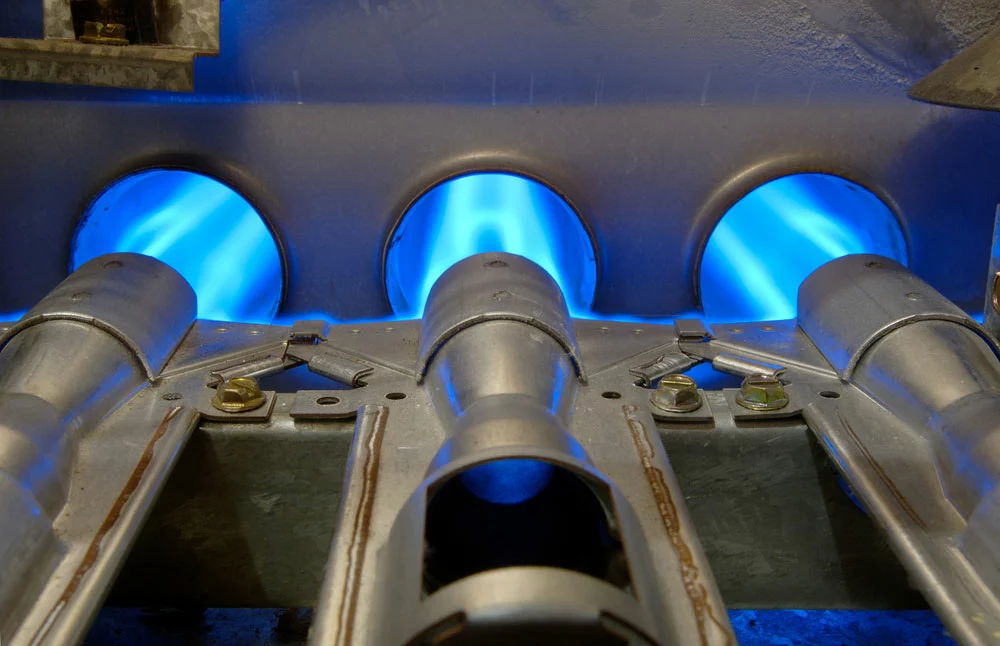
Calculate Heating Requirements: A close-up of a natural gas furnace installed in a home
For instance, a 100,000 BTU natural gas furnace might burn around 95-100 cubic feet of gas per hour. A similar-sized propane furnace will burn roughly 40 cubic feet of fuel, making these units more efficient and easier on your wallet.
Wrap Up
In conclusion, heating is essential during the cold months, and you should pick the right heater, boiler, or furnace size for your home. Although there is a simple heat loss or gain unit (BTU), several dynamics affect the heating requirements. Ensure you include these factors in your equation to determine the most suitable heater size, as shown above. That’s it for this article. Contact us if you have any questions or comments, and we’ll get back to you asap.

